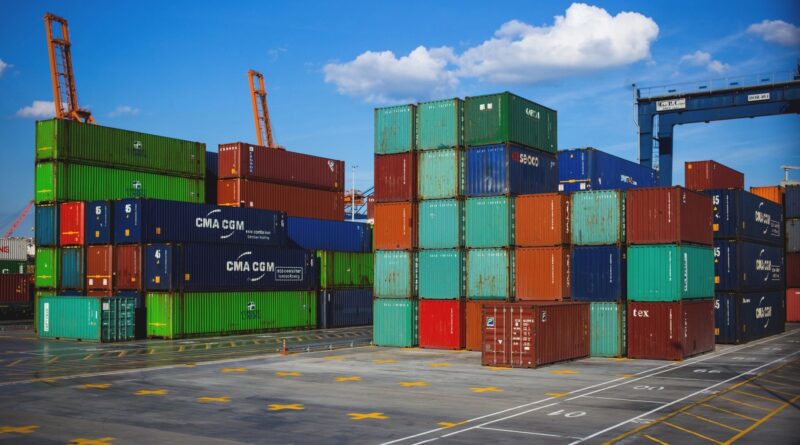Global Economic Crises and the Resilience of the Canadian Dollar
The global economic landscape is fraught with uncertainties, and throughout history, various crises have tested the resilience of currencies worldwide. One currency that has consistently weathered storms and demonstrated robustness in the face of global economic upheavals is the Canadian dollar (CAD), often affectionately referred to as the loonie. This article delves into the historical context of global economic crises and explores how the Canadian dollar has exhibited resilience, standing firm amid challenging times.
Historical Overview of Global Economic Crises
- The Great Depression (1929-1939): The Great Depression marked one of the most severe economic downturns in modern history. Triggered by the stock market crash of 1929, it led to widespread unemployment, bank failures, and a sharp contraction in global economic activity. Currencies worldwide faced devaluations, trade barriers rose, and the global economy plunged into a prolonged period of hardship.
- Oil Crises of the 1970s: The 1970s witnessed two oil shocks that sent shockwaves through the global economy. The Organization of the Petroleum Exporting Countries (OPEC) imposed an oil embargo in 1973, followed by another crisis in 1979. These events led to skyrocketing oil prices, triggering inflation, stagflation, and economic turmoil across many nations.
- Global Financial Crisis (2008-2009): The Global Financial Crisis (GFC) emerged from the collapse of the subprime mortgage market in the United States. It swiftly escalated into a global banking crisis, causing a severe recession. Lehman Brothers’ bankruptcy in 2008 became symbolic of the financial turmoil, resulting in a prolonged period of economic uncertainty and policy responses worldwide.
- Eurozone Crisis (2010-2014): The Eurozone crisis unfolded as several European countries faced severe debt challenges, threatening the stability of the Euro. Greece, Portugal, Ireland, Spain, and Italy grappled with high debt levels, leading to financial assistance packages, austerity measures, and economic contractions. The crisis exposed vulnerabilities in the Eurozone’s economic framework.
Resilience of the Canadian Dollar During Global Economic Crises
- Sound Fiscal Management: Canada’s commitment to sound fiscal management has been a cornerstone of its economic resilience. During global economic crises, the Canadian government has demonstrated prudent fiscal policies, maintaining a comparatively lower level of public debt. This responsible approach has bolstered investor confidence in the Canadian economy and the stability of the loonie.
- Resource-Rich Economy: Canada’s abundance of natural resources, particularly in the form of energy commodities, has contributed to the resilience of its economy and currency. The global demand for commodities, including oil, has often provided support for the Canadian dollar, mitigating the impact of economic downturns and crises on the country’s overall economic health.
- Diversification of Trade Partners: Canada’s commitment to diversifying its trade relationships has played a pivotal role in shielding the economy from the full brunt of global economic crises. The country has actively sought trade partnerships beyond traditional markets, reducing dependence on any single economic bloc. This diversification has helped buffer the Canadian dollar against shocks originating from specific regions.
- Robust Banking System: Canada’s banking sector is renowned for its stability and resilience. During the 2008 Global Financial Crisis, Canadian banks remained relatively unscathed compared to their international counterparts. Stringent regulatory measures and conservative lending practices contributed to the sector’s strength, instilling confidence in both domestic and international investors.
- Floating Exchange Rate System: The Canadian dollar operates on a floating exchange rate system, allowing its value to be determined by market forces. While this exposes the currency to short-term fluctuations, it also provides flexibility for adjustments in response to economic shocks. The ability to adapt to changing global conditions has been a key factor in the loonie’s resilience.

Case Studies: Canadian Dollar Resilience in Specific Crises
- The 2008 Global Financial Crisis: Amid the chaos of the 2008 Global Financial Crisis, the Canadian dollar exhibited remarkable resilience. While many currencies faced devaluations, the loonie maintained its value relative to other major currencies. Canada’s strong economic fundamentals, coupled with robust fiscal and monetary policies, contributed to the currency’s stability during this turbulent period.
- Oil Price Collapse (2014-2016): The sharp decline in oil prices from mid-2014 to early 2016 posed challenges for Canada, a major oil exporter. Despite the economic headwinds, the Canadian dollar remained relatively stable. The country’s diversified economy, prudent fiscal policies, and the flexibility of the floating exchange rate allowed the loonie to weather the impact of the oil price collapse.
- Current Challenges and the COVID-19 Pandemic: The onset of the COVID-19 pandemic in 2020 brought unprecedented challenges to the global economy. Lockdowns, disruptions in international trade, and uncertainties led to increased market volatility. Throughout the pandemic, the Canadian dollar exhibited resilience, supported by effective government responses, fiscal stimulus measures, and the gradual recovery of global economic activity.
Economic Policies and Responses
- Monetary Policy Tools: The Bank of Canada plays a crucial role in shaping the resilience of the Canadian dollar through its monetary policy tools. Interest rate adjustments, quantitative easing measures, and forward guidance are employed to maintain price stability and support economic growth. The central bank’s ability to adapt to evolving economic conditions influences the loonie’s performance.
- Fiscal Stimulus Measures: During economic crises, governments often implement fiscal stimulus measures to support economic recovery. Canada has deployed targeted fiscal policies, including infrastructure spending, social programs, and financial assistance, to mitigate the impact of downturns. The coordination of monetary and fiscal policies contributes to the overall resilience of the Canadian economy and its currency.
Global Economic Trends and Trade Dynamics
- Impact of Global Economic Trends: The interconnected nature of the global economy means that trends in major economies influence the Canadian dollar. Economic growth, trade volumes, and geopolitical events all contribute to the loonie’s valuation. Monitoring global economic trends is crucial for understanding the external factors that may impact the resilience of the Canadian dollar.
- Trade Dynamics and Exchange Rates: Canada’s role as a major trading nation means that trade dynamics have a direct impact on the Canadian dollar. Fluctuations in commodity prices, changes in demand for Canadian exports, and shifts in global trade patterns all influence the loonie’s exchange rates. The ability to navigate evolving trade dynamics contributes to the currency’s resilience.
Challenges and Future Considerations
- Commodity Price Volatility: The reliance on commodity exports exposes the Canadian dollar to fluctuations in commodity prices. Managing the impact of volatile commodity markets on the loonie requires strategic economic policies and diversification efforts to reduce dependency on specific commodities.
- Global Economic Uncertainties: Ongoing global economic uncertainties, including trade tensions, geopolitical risks, and the aftermath of the COVID-19 pandemic, pose challenges for the Canadian dollar. Navigating these uncertainties requires adaptive economic policies and proactive measures to maintain resilience.
- Environmental and Social Considerations: Evolving global trends, including a focus on environmental sustainability and social responsibility, may impact the Canadian dollar. The transition to a low-carbon economy, changes in consumer preferences, and international efforts to address social issues can influence trade dynamics and investment patterns.

The Canadian dollar’s resilience in the face of global economic crises reflects a combination of prudent economic policies, a diversified economy, and adaptive responses to changing conditions. From the Great Depression to the recent challenges posed by the COVID-19 pandemic, the loonie has demonstrated its ability to weather storms and emerge with stability.
While challenges persist, including commodity price volatility and ongoing global uncertainties, the lessons from history underscore the importance of flexibility, sound fiscal management, and proactive policies. As Canada continues to navigate the complexities of the global economic landscape, the resilience of the Canadian dollar remains a testament to the nation’s economic strengths and its capacity to withstand the ever-evolving challenges of the world economy.


